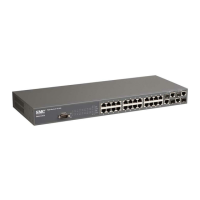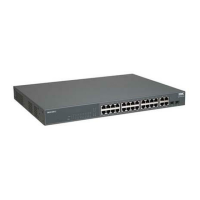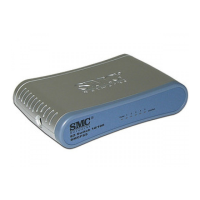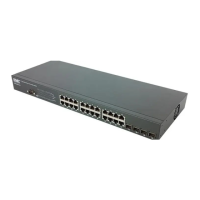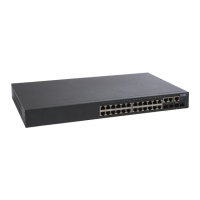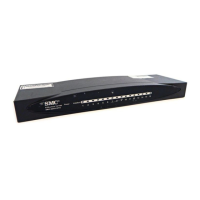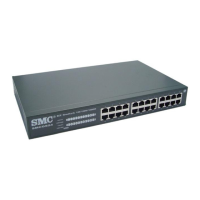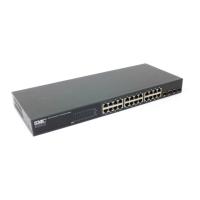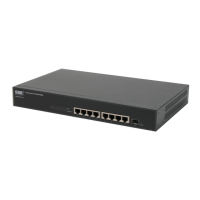D
ESCRIPTION
OF
S
OFTWARE
F
EATURES
1-8
Address Resolution Protocol – The switch uses ARP and Proxy ARP to
convert between IP addresses and MAC (i.e., hardware) addresses. This
switch supports conventional ARP, which locates the MAC address
corresponding to a given IP address. This allows the switch to use IP
addresses for routing decisions and the corresponding MAC addresses to
forward packets from one hop to the next. You can configure either static
or dynamic entries in the ARP cache.
Proxy ARP allows hosts that do not support routing to determine the
MAC address of a device on another network or subnet. When a host
sends an ARP request for a remote network, the switch checks to see if it
has the best route. If it does, it sends its own MAC address to the host. The
host then sends traffic for the remote destination via the switch, which
uses its own routing table to reach the destination on the other network.
Quality of Service – Differentiated Services (DiffServ) provides
policy-based management mechanisms used for prioritizing network
resources to meet the requirements of specific traffic types on a per-hop
basis. Each packet is classified upon entry into the network based on
access lists, IP Precedence or DSCP values, or VLAN lists. Using access
lists allows you select traffic based on Layer 2, Layer 3, or Layer 4
information contained in each packet. Based on network policies, different
kinds of traffic can be marked for different kinds of forwarding.
Multicast Filtering – Specific multicast traffic can be assigned to its own
VLAN to ensure that it does not interfere with normal network traffic and
to guarantee real-time delivery by setting the required priority level for the
designated VLAN. The switch uses IGMP Snooping and Query to manage
multicast group registration.
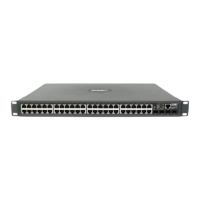
